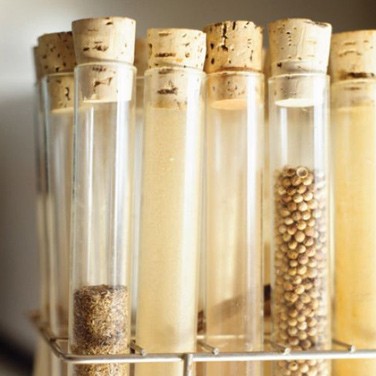Labware: From the Benchtop to the Kitchen
By Ralph Birch
At its core, cooking is about finding the right chemistry. Through experimentation in the kitchen, novices and experts alike can learn how a pinch of this or a dash of that affects their recipe. And while their efforts may use grandma’s chocolate chip cookie recipe as a jumping off point, some aspiring culinary masters are trading in traditional mixing bowls and measuring cups for tools more likely to be found on a lab benchtop than a kitchen cabinet.
Molecular gastronomy is a blend of physics and chemistry that transforms the tastes and textures of food, creating new experiences for both chefs and the dining public. By combining tools from the lab and ingredients from the kitchen, the chemical reactions that occur during the cooking process are coupled with the social, artistic and technical components of this culinary phenomenon.
Labware at Home
For those not quite ready to produce gels, foams and spheres made from their favorite flavors, using laboratory-grade glassware in a home kitchen is still a viable option. Many of the properties that make lab equipment so functional — a high melting point and resistance to strong acids, alkalis and thermal shock — can be quite useful in the kitchen as well.
Rise in Popularity
Some companies known for selling more traditional cooking and baking supplies are now stocking labware and equipment as fun and functional alternatives.
- Online sales of water baths and pre-assembled molecular gastronomy kits for home cooks of all ages have increased significantly in recent years.
- Beakers have a multitude of uses. They can serve as measuring cups, drinking glasses or vessels to display layered desserts, or use them for mixing and serving salad dressings.
- Test tubes can serve as makeshift shot glasses; filled and capped, they become a spice rack!
- Their larger size makes Erlenmeyer flasks popular with home-brewing enthusiasts, and the flasks can also be used as transparent storage for leftover soups and sauces.
- If you’re making a delicate sauce but don’t have the time or inclination to stand at the stove and stir, use a magnetic stirring hot plate and PTFE coated stir bar to blend the flavors for you.
Easy Cleanup
No matter what types of labware you bring into your kitchen or how many times you use each piece, they won’t stain or retain the flavors from your previous culinary endeavors. Just place them in the dishwasher, and they’ll be ready for your next gastronomic excursion.
